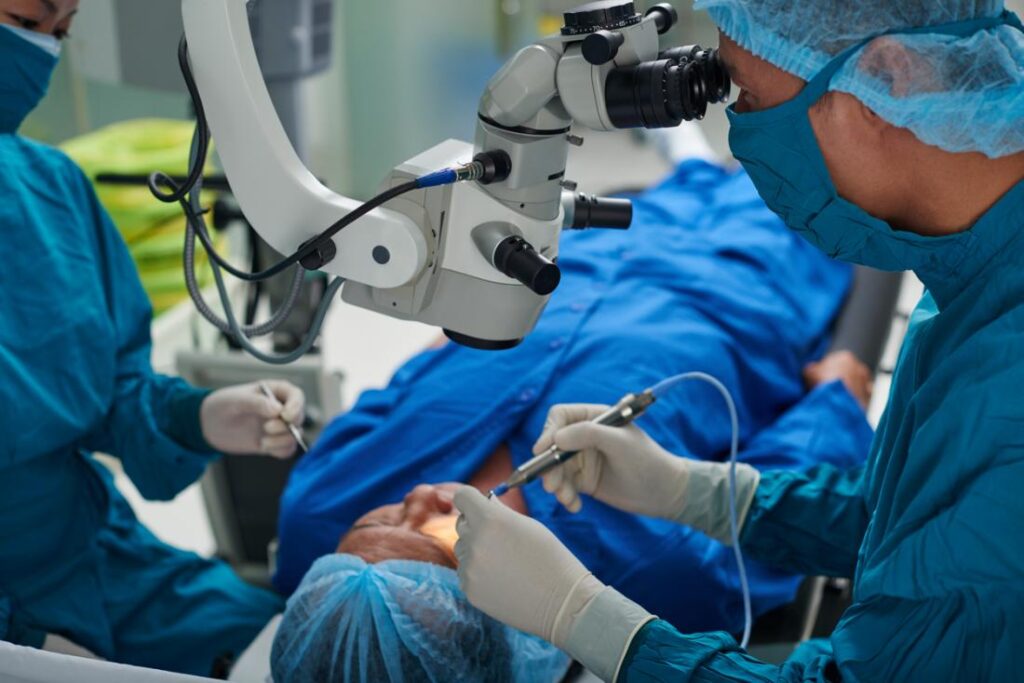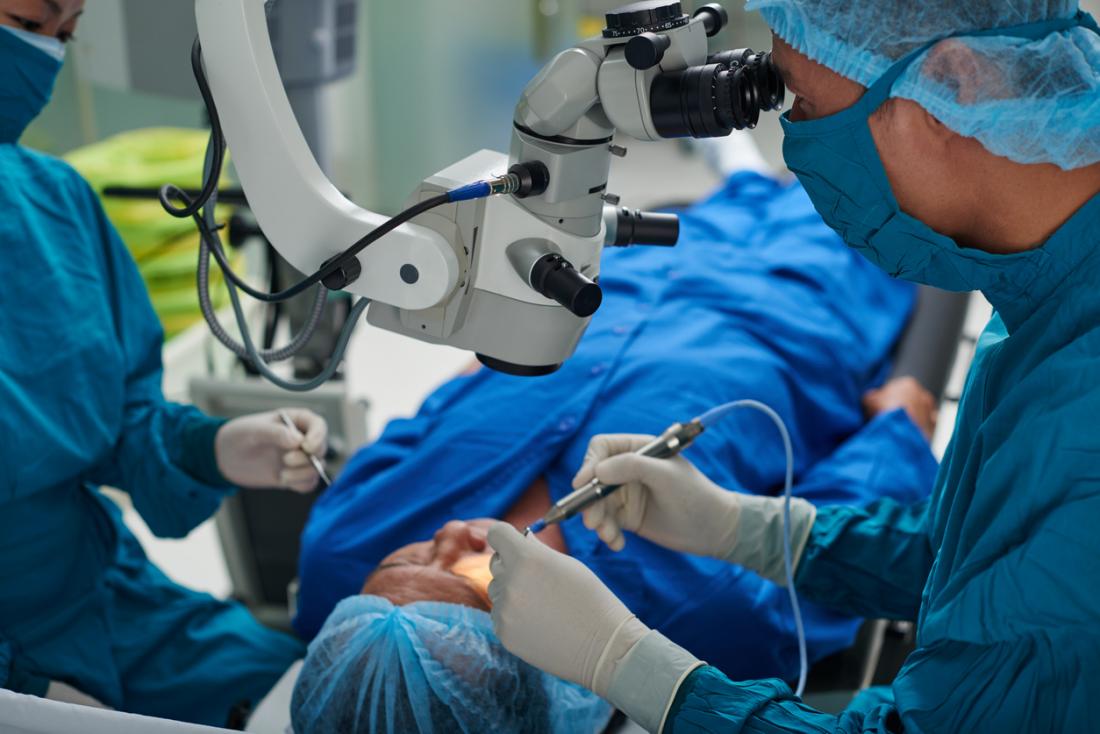There are several setups available for laser refractive surgery. The most popular and often performed technique is laser eye surgery. Other methods of laser eye surgery will be referred to as “LASIK” in several publications, including the one.
The retina in the back of the eye is where pictures are often focused. As a result of nearsightedness, astigmatism, or farsightedness, they get concentrated either before or maybe behind the retina, resulting in impaired vision. Learn more about advantages of laser eye surgery.
Myopia, often known as nearsightedness, is a condition in which you can see things well up close but find it difficult to see things clearly away. Light rays concentrate before the retina when your eyeball is somewhat larger than usual or if the cornea is too sharply curved, blocking your ability to see far away. You can see items in close proximity much more clearly than you can at a distance, but not people.
Hyperopia (farsightedness) is a condition in which you can see far objects well but not up-close ones. Light is directed behind the retina rather than on it when the eyeball is shorter than usual or if the cornea is overly dull. This results in near- and often far-sightedness becoming blurred.
Blurred vision is a frequent side effect of astigmatism. When the cornea flattens or bends unevenly, astigmatism results, impairing both near- and far-sightedness. The traditional method of treating blurry vision has been to use contact lenses or glasses to bend (refract) light rays. However, altering the cornea—the transparent tissue in the form of a dome—may be able to correct eyesight as well as give the necessary refraction.

The need for prescription lenses, protective gear, and sunglasses is eliminated through laser eye surgery. Additionally, it does away with the need for contact lenses, which may be quite uncomfortable while participating in activities that include sweat, mud, and water. After undergoing laser eye surgery, athletes may get the eyewear they need for performance without worrying about vision correction. Even if an athlete’s spectacles break mid-race, the competition still goes on.
Even the average wearer of glasses may profit greatly from laser eye surgery. Consider the advantages of laser eye surgery if you have worn glasses for a long time.
What is laser eye surgery (laser assisted in situ keratomileusis)?
In your cornea’s outermost layer, laser eye surgery creates an extraordinarily thin, square flap that allows the inside layers to be reshaped to correct curvature anomalies that lead to impaired vision. It’s unusual since it’s the only laser vision correction procedure that modifies the cornea by using a flap technique.
The lower layers of the cornea are corrected, the flap is reinstalled, and it is then allowed to heal naturally without the need of sutures.
1. Better eyesight
Approximately 95% of patients who have laser eye surgery achieve uncorrected visual acuity (UCVA) of at least 20/40, and 85% achieve 20/20 vision or better. After a single outpatient procedure, patients’ vision is considerably improved.
Improved eyesight is, unsurprisingly, the primary advantage of laser vision correction techniques like laser eye surgery. While there is no assurance that the procedure will provide perfect vision, about 96% of those who have laser eye surgery get 20/20 vision. Those who don’t see a major improvement in their vision and a considerable reduction in their need on glasses or maybe contact lenses.

2. Long-term results
Benefits from laser eye surgery must be long-lasting after a stabilization period of around 3 weeks to allow the eye to acclimate. The patient’s improved eyesight lasts forever, barring any natural age- or illness-related vision loss, and there is simply no need for follow-up procedures unless the surgical procedure wrongly restored the patient’s vision.
3. Quick recovery and quick results
Many ophthalmologists believe that patients may resume their regular routine as soon as the following day, unless they work in a dusty or dirty workplace, even if you won’t be able to drive after laser eye surgery. Think of attaining near-perfect vision in a single day!
4. No need for other eye surgeries
The estimated annual cost of contacts is between $375 and $450. Even though laser eye surgery is often more expensive, you only need to pay for it once. After a few years, it will pay for itself by reducing your need for eyeglasses and actually begin saving you money. Not to mention that you won’t have to deal with repairs, hurt your own eye, or even dig around on the floor looking for a lost contact.
5. No need to purchase expensive sunshades
Although it is realistic to assume that the era of professional athletes using glasses without lenses is ended, wouldn’t it be wonderful to have the option? Even just taking off your glasses might significantly alter how you appear. Furthermore, you won’t need to purchase expensive prescription sunglasses or even special lenses for your eyeglasses in order to wear the style of sunglasses you choose.

Laser eye surgery is now even safer
Despite the fact that no surgery is completely risk-free, laser vision correction is now safer than ever before. The flap technique does, however, create a few problems, which will likely be discussed in more depth in the next section.
rapid recovery How quickly you can anticipate recovering after laser eye surgery is one of the most often requested questions. In most cases, the recovery time after laser eye surgery is between 24 and 36 hours, excluding complications with the flap implantation. Additionally, there is no need to apply uncomfortable bandages. As a result, you might quickly resume your job and trip plans.
In general, most people who have laser assisted in situ keratomileusis (laser eye surgery) experience vision of 20/20 or better, which is adequate for the majority of activities. However, as people age, the great majority eventually need glasses for driving at night or when reading.
The success of laser eye surgery has been shown in the past. Since problems that cause vision loss are uncommon, most people are delighted with the outcome. Some side effects, notably dry eyes and temporary visual issues are exceedingly prevalent (such as glare). However, symptoms often go away within a few weeks or months, and not many individuals consider them to be a long-term problem.
Your results will vary depending on your refractive error as well as other factors. The success rates of refractive surgery are highest in patients with mild nearsightedness. People who have severe astigmatism and nearsightedness or farsightedness along with astigmatism have less predictable vision.
